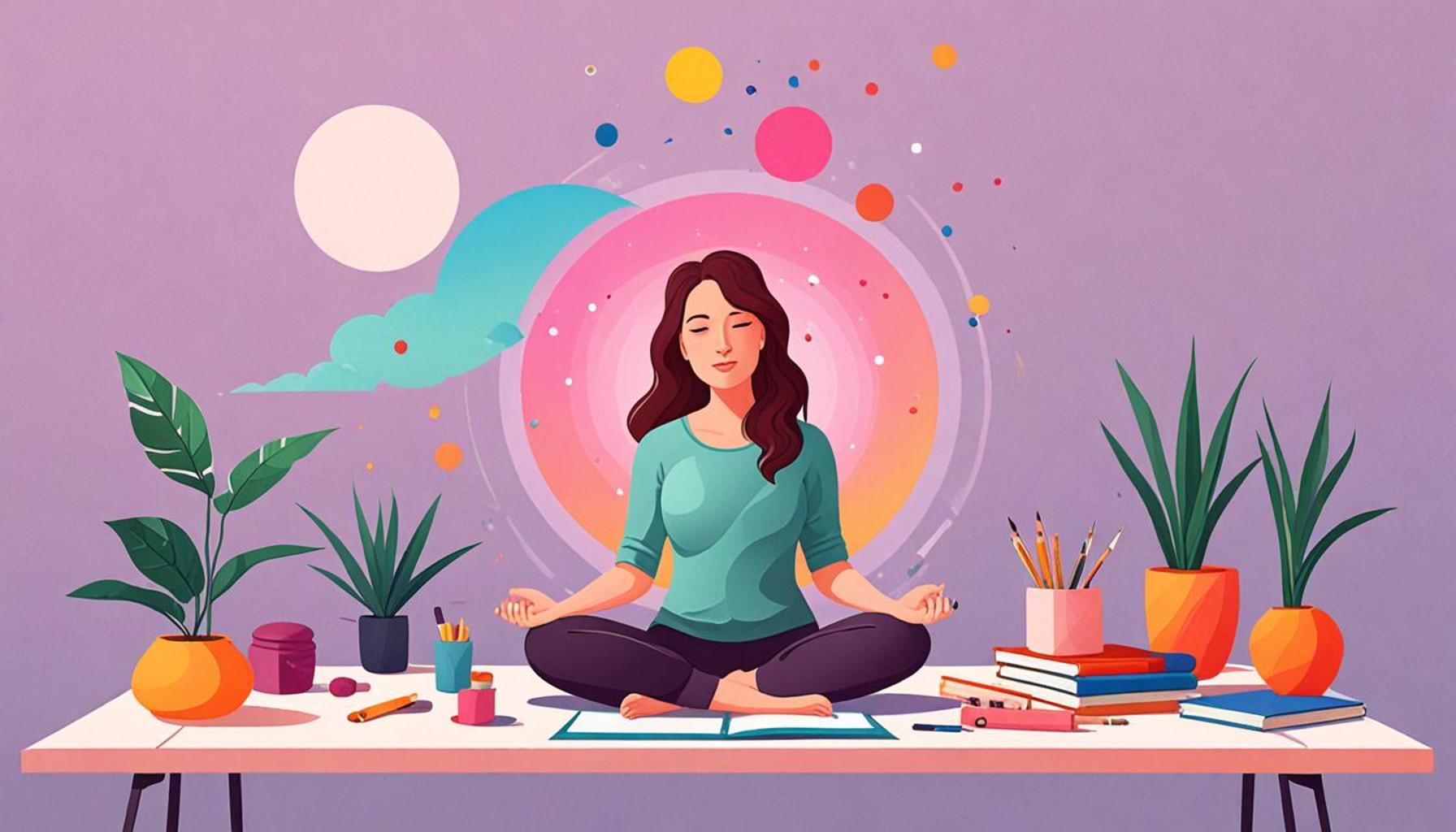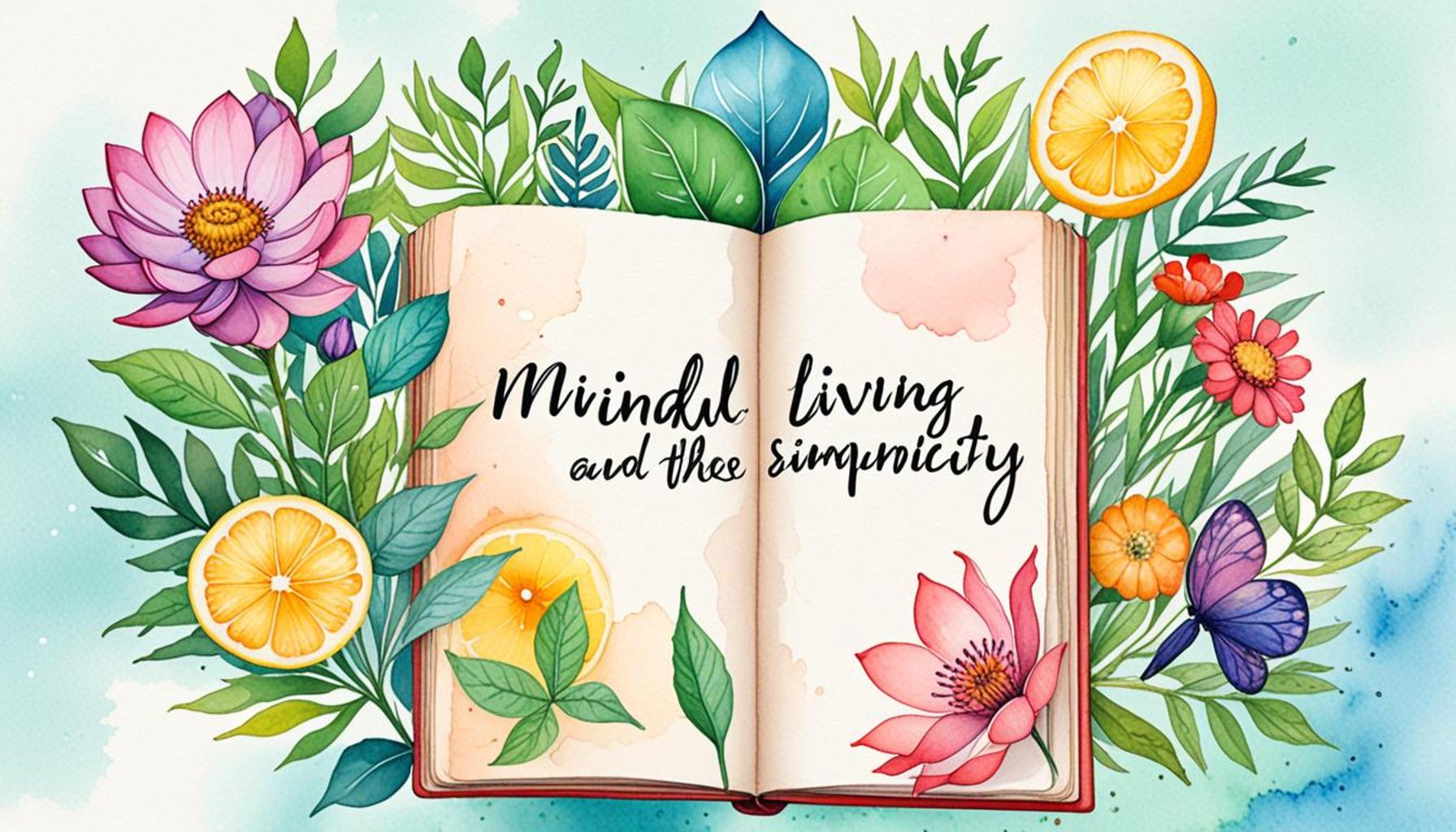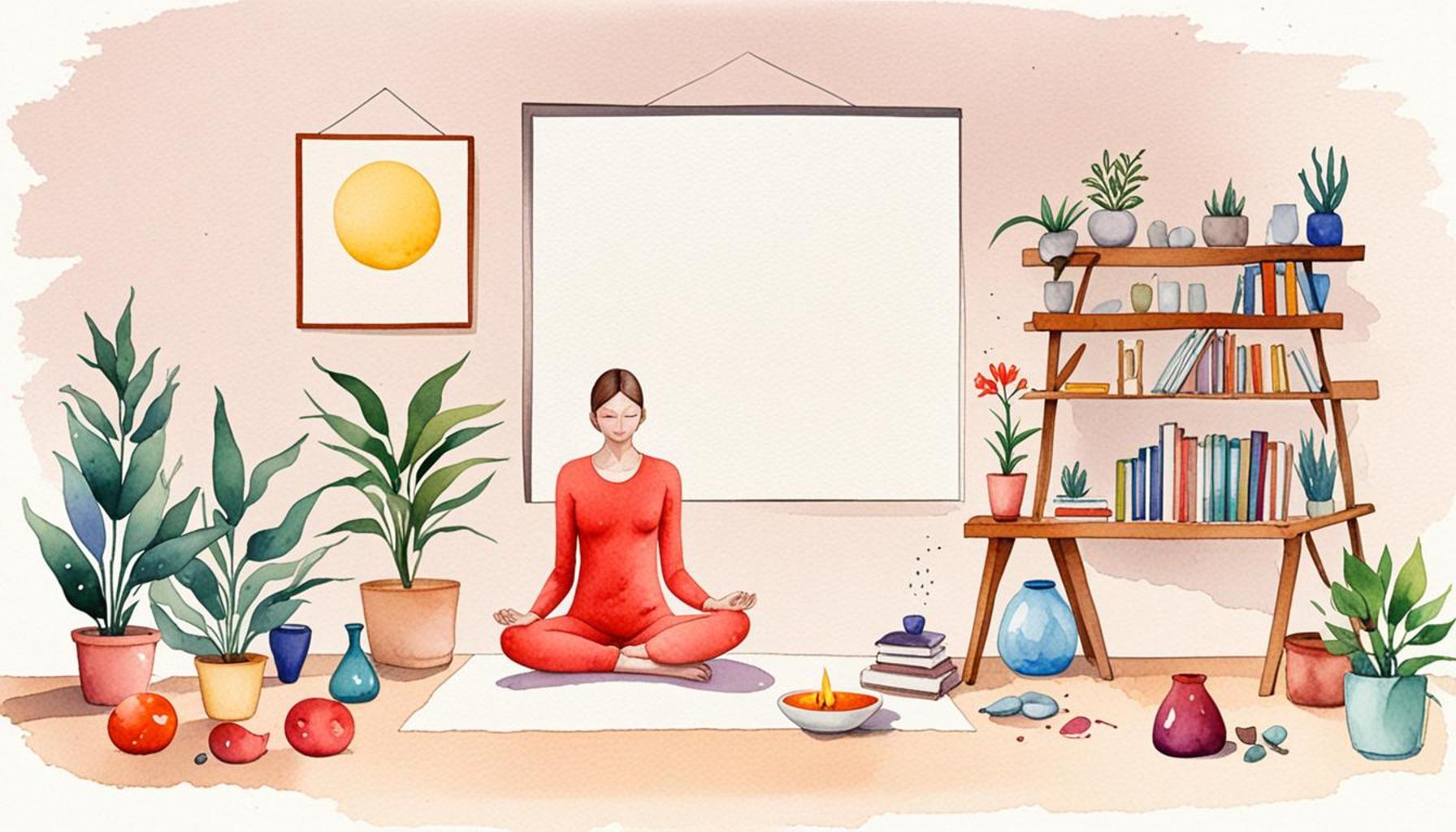Mindful Living: Integrating Meditation into Daily Organization

Embrace Serenity in Your Daily Routine
In an increasingly chaotic world, the art of mindful living has never been more essential. Imagine transforming your daily organization through the calming practice of meditation. This powerful integration can foster focus, reduce stress, and enhance overall productivity.
Research indicates that just a few minutes of meditation each day can profoundly impact mental clarity and emotional well-being. By taking the time to reconnect with oneself, individuals can prepare their minds to face a busy day ahead, shifting from a reactive to a more proactive approach to tasks. To truly understand the benefits of this harmonious blend, let’s explore some compelling aspects:
- Enhanced Clarity: Meditation can clear mental clutter, making it easier to prioritize tasks. Studies show that practitioners often experience increased cognitive flexibility, meaning they can approach complex problems with greater ease and creativity. This newfound clarity allows individuals to discern which tasks are truly important, potentially leading to better decision-making and increased efficiency.
- Heightened Awareness: Being mindful allows you to engage fully with each task, fostering a deeper connection with your work. This level of engagement not only enhances the quality of the work produced but also promotes a sense of accomplishment and satisfaction. For example, an individual might find greater joy in simple tasks, such as organizing their desk, which can transform mundane duties into moments of mindfulness.
- Stress Reduction: Regular meditation helps manage stress levels, leading to a more balanced and calmer approach to daily challenges. Anecdotal evidence supports the effectiveness of meditation in lowering cortisol levels, the hormone responsible for stress. Over time, this practice can contribute to improved mental health outcomes, such as reduced anxiety and a higher overall sense of well-being.
Consider how different environments might benefit from this integration. For instance:
- A corporate office can adopt brief mindfulness sessions before meetings. Many forward-thinking companies have begun implementing five-minute breathing exercises before brainstorming sessions to help employees center their thoughts.
- Home organization tasks can be started with a few moments of meditation to set intentions. Taking a minute to visualize an organized space can energize the process and create a sense of purpose.
- Creative spaces can incorporate mindful breaks to boost inspiration and focus. Artists and writers might find that stepping away for focused breathing exercises allows their ideas to flow more freely when they return to their work.
As we delve deeper into the concept of mindful living, you’ll discover practical techniques to weave meditation seamlessly into your organized life. Techniques like guided meditations available through various apps can serve as an accessible entry point for beginners. Prepare to unlock new levels of productivity and calm as you navigate through your day with intention, paving the way for a more peaceful existence amidst the hustle and bustle of modern life.
LEARN MORE: Click here for insights on effective design

Practical Techniques for Mindful Integration
To harness the benefits of mindful living and effectively integrate meditation into daily organization, adopting practical techniques can transform your approach to routine tasks. By incorporating mindful practices, individuals can not only organize their physical spaces but also cultivate a serene mental environment. Here, we explore a selection of techniques that can seamlessly blend meditation into everyday life:
- Morning Intention Setting: Begin each day with a brief session of meditation focused on setting intentions. This practice can include breathing exercises for a few minutes, followed by visualizing the goals for the day. For instance, envisioning a well-organized workspace before diving into tasks can instill clarity and purpose, reducing feelings of overwhelm as the day unfolds.
- Mindful Task Management: When tackling daily activities, implement a technique called the “Pomodoro Technique.” This method involves working for 25 minutes, followed by a five-minute mindfulness break. Use this break to practice focused breathing or engage in a short guided meditation. By doing so, you promote a reset of mental clarity, allowing for enhanced focus when you return to work.
- Gratitude Reflection: At the end of each day, dedicate a few minutes to reflect on accomplishments and express gratitude for completed tasks. This practice not only fosters a sense of achievement but also encourages mindfulness. Journaling about your experiences can deepen the effect, helping to consolidate daily lessons learned and set a positive mindset for the following day.
- Slowing Down During Routine Tasks: Integrate moments of mindfulness into routine activities such as cleaning your home or sorting emails. By consciously choosing to focus entirely on these tasks, observing sensations and movements, you foster a mindful approach that turns mundane chores into opportunities for deeper presence. This practice can also reduce stress levels as the task becomes a form of active meditation.
These techniques can adapt to various settings, whether at home, the workplace, or even during transit. What remains essential is the intent to infuse mindfulness into day-to-day organization. Research confirms that mindful organization leads not only to improved productivity but also to heightened engagement with one’s work and surroundings.
Moreover, as you begin to practice these integration techniques, the flexibility of mindfulness allows individuals to choose how and when it fits best into their lifestyles. Explore meditation apps or online guided sessions to aid your practice, as these resources can provide structure and support on your journey to integrating meditation into your daily organization.
By understanding and applying these mindful integration techniques, you stand to gain not just a more organized life, but an enriched experience infused with tranquility and focus. As you delve into deeper mindfulness practices, the impact on your daily organization will unfold, paving the path for a more serene and productive existence.
| Advantages | Key Features |
|---|---|
| Enhanced Focus | Meditation promotes improved concentration and mental clarity. |
| Stress Reduction | Mindfulness practices help alleviate stress, creating a calmer workspace. |
| Increased Productivity | Integrating meditation into your day can lead to higher efficiency. |
| Emotional Stability | Regular meditation fosters emotional resilience and helps in managing daily challenges. |
The integration of meditation into daily organization not only enhances focus and productivity but also significantly contributes to emotional and mental well-being. By incorporating these enriching practices into a routine, individuals may discover that their capacity to handle stress improves dramatically. The harmony created by this mindful approach enables better decision-making skills during high-pressure moments at work or personal life, which is critical in today’s fast-paced environment.Moreover, the benefits extend beyond individual productivity; team dynamics can also be transformed when colleagues practice shared mindfulness. The collective engagement in such practices fosters enhanced communication levels and collaboration amongst team members, leading to a more productive work environment. The ripple effects of mindful living can ultimately improve overall workplace morale, encouraging a culture of health and wellness that benefits everyone involved.As your journey into mindful living unfolds, learn to embrace meditation as an essential tool for effective daily organization. Consider exploring workshops or apps that guide these practices, each tailored to refine your approach.
EXPLORE MORE: Click here to discover how to simplify your life
Creating a Mindful Environment
An often-overlooked aspect of mindful living is the influence of one’s physical environment on mental clarity and organization. Creating a mindful environment is pivotal in supporting meditation practices while managing daily tasks. The physical space should align with your intentions and promote tranquility. Here are several actionable steps to cultivate such an environment:
- Decluttering Mindfully: Begin with a thorough decluttering process. Remove unnecessary items from your workspace and living areas while engaging in a mindful approach. Take your time to evaluate each item’s significance, focusing on feelings of attachment and purpose. As you clear, meditate on the idea of letting go, which can foster a sense of lightness and clarity—both mentally and physically.
- Mindful Décor Choices: Select colors and materials that evoke peace and serenity. Earthy tones, soft textures, and natural elements contribute to a calming atmosphere, creating a backdrop more conducive to focus and meditation. You might consider having plants or artwork that inspires mindfulness as part of your décor. Research indicates that incorporating nature into workspaces can reduce stress and increase productivity.
- Designated Meditation Spaces: If possible, carve out a dedicated space in your home for meditation. This space should be free from distractions and equipped with items that enhance your practice, such as cushions or soft lighting. Consistently using this area can condition your mind to associate the space with relaxation and focused intent, further integrating meditation into your organizational habits.
- Sensory Adjustments: Pay attention to sensory elements in your environment. Adjust lighting to ensure it is soft yet bright enough for productivity, use aromatherapy with calming scents like lavender or peppermint, and consider soft background music or ambient sounds conducive to focus. Each of these elements can enhance mindfulness, allowing you to immerse yourself in your tasks without unnecessary distractions.
These changes, while seemingly small, can profoundly influence your daily organization and mindfulness practice. Engaging with your environment mindfully enables you to create a supportive backdrop that facilitates both productivity and meditative moments. Studies have shown that a well-organized and aesthetically pleasing environment can decrease anxiety levels and promote clearer thinking, making it a vital aspect of achieving a balanced life.
Incorporating Mindful Communication
Communication is an essential part of daily organization and can significantly impact your mindfulness practice. How you communicate, both with yourself and others, fosters a mindful atmosphere conducive to meditation. Emphasizing conscious communication can promote clarity and understanding in both personal and professional relationships. Here are a few strategies for mindful communication:
- Active Listening: Employ active listening techniques during conversations. Focus on being fully present and attentive to what others are saying, rather than planning your next response. This not only deepens the connection with others but also cultivates patience and reduces potential misunderstandings.
- Mindful Speaking: When expressing your thoughts, do so with clarity and intention. Take a moment to breathe and formulate your words carefully. This practice encourages thoughtful dialogue, reducing the likelihood of emotional outbursts or misconstrued messages.
- Non-Verbal Cues: Be mindful of your body language and facial expressions when communicating. Non-verbal signals often express emotions more vividly than words, so ensuring your body language aligns with your intent can enhance understanding and reinforce a calming presence.
- Scheduled Check-Ins: In professional settings, implementing regular check-ins can promote an ongoing dialogue grounded in mindfulness. Use these sessions to discuss workloads, stress levels, and overall well-being, fostering a culture of open communication and support.
Incorporating these mindful communication strategies can enrich interpersonal relationships and create a more harmonious organizational environment. It aligns closely with the principles of mindful living, as it allows individuals to remain more grounded and present in their interactions with others.
As you explore these integral aspects—both environmental and communicative—you’ll find that the fabric of your daily life begins to weave together with intention, clarity, and mindfulness. Each element empowers you to not only take charge of the organization but also cultivate a lifestyle that supports your journey toward deeper awareness and balance.
DISCOVER MORE: Click here to learn how to improve your productivity
Conclusion
Incorporating mindful living into your daily organization can transform not only your workspace but also your overall mental landscape. By adopting practices such as decluttering mindfully and embracing conscious communication, you create an environment that promotes both productivity and serenity. A peaceful physical space aligns with the intentions of your meditation practice, allowing the principles of mindfulness to permeate every corner of your life.
Moreover, fostering an atmosphere of open and mindful communication can enhance your interactions with others, leading to healthier relationships both personally and professionally. As you cultivate this mindful approach, you’ll likely notice a profound shift in your ability to remain present and engaged, reducing stress while increasing clarity in your thoughts and actions.
As you blend these techniques into your routine, consider the cumulative effect they have on your well-being. You are not merely organizing your space or practicing meditation in isolation; you are creating a holistic lifestyle grounded in mindfulness. This intentional approach not only aids in managing day-to-day tasks but also paves the way for deeper self-awareness and personal growth.
Ultimately, integrating meditation into daily organization is not just a practice; it’s a pathway to a fulfilling, balanced life. Explore these methods further, and discover how they can elevate your everyday experiences. The journey towards mindful living begins today, inviting mindfulness into even the smallest moments of your life.


